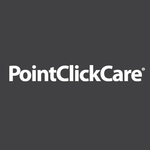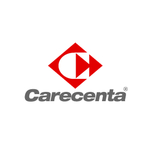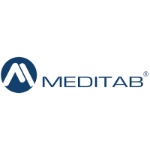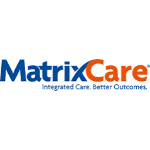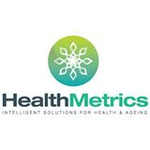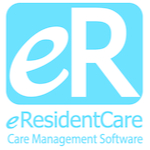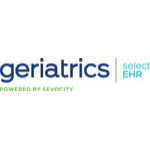List of Best Long Term Care Software
Showing 10 of 20 productsPointClickCare is a leading electronic health record (EHR) platform that helps healthcare providers streamline and optimize their daily operations. With its intuitive and user-friendly interface, PointClickCare serves as a crucial tool for managing p...Read PointClickCare Reviews
Carecenta is a highly efficient and user-friendly software designed to streamline the operations of home care agencies. This innovative platform provides a centralized solution for managing client information, schedules, and billing, helping agencies...Read Carecenta Reviews
Meditab is a software for healthcare professionals. With user-friendly features and streamlined processes, Meditab makes managing patient data, appointments, and financials a breeze. Say goodbye to cumbersome paperwork and hello to a more efficient a...Read Meditab Reviews
AL Advantage, the ultimate tool for streamlining your business processes and boosting efficiency. With its user-friendly interface features, our software is designed to maximize productivity and optimize workflow. Say goodbye to tedious tasks and hel...Read AL Advantage Reviews
ALIS, the innovative software transforming the way businesses manage their operations. With its intuitive user interface features, ALIS streamlines tasks and improves efficiency. From organizing data to automating processes, ALIS is the all-in-one so...Read ALIS Reviews
MatrixCare is a leading electronic health record (EHR) software that has revolutionized the healthcare industry with its user-friendly, advanced features. Designed to streamline and optimize the daily operations of healthcare organizations, MatrixCar...Read MatrixCare Reviews
eCase is a software designed to simplify case management and streamline workflow for professionals. With its user-friendly interface features, eCase offers a seamless solution for organizing, analyzing, and managing cases. Get ready to enhance your e...Read eCase Reviews
eResidentCare is a software designed to streamline and simplify care management for residential facilities. With its user-friendly interface, advanced features, and customizable options, eResidentCare is transforming the way caregivers provide qualit...Read eResidentCare Reviews
AHT, the ultimate software solution for all your business needs. Developed by a team of experts, AHT offers unparalleled efficiency and ease of use, making it an essential tool for any modern company. Say goodbye to complicated processes and hello to...Read AHT Reviews
Geriatrics Select EHR, the ultimate electronic health record system designed specifically for the needs of geriatric patients. With its user-friendly interface and customizable features, Geriatrics Select EHR aims to streamline and improve the care f...Read Geriatrics Select EHR Reviews
- What Is Long Term Care Software?
- Top Reasons Why Businesses Need Long Term Care Software?
- What Are the Top Key Features of Long Term Care Software?
- What Are the Top Benefits of Long Term Care Software?
- What Are the Steps to Choose the Right Long Term Care Software?
- What Are the Types of Long Term Care Software for Different Industries?
- What Are the Technology Trends for Best Long Term Care Software?
- What Are the Deployment Options for Long Term Care Software?
What Is Long Term Care Software?
Long-term care software refers to a specific category of information technology systems that have been developed to enhance the management of healthcare services for elderly and disabled individuals within the healthcare business.
The software for long term care possesses the capability to monitor and record patient data, arrange appointments, oversee the admission and discharge processes of patients, as well as document the care delivered. Additionally, it has the capability to furnish data regarding the efficacy of care services, thereby aiding healthcare practitioners in pinpointing areas that require enhancement.
In addition, this technology has the capability to do calculations and monitor patient billing processes on behalf of insurance carriers. The utilization of the best long term care software has been shown to enhance the quality of patient care while concurrently mitigating the financial burdens associated with patient management.
Furthermore, it aids healthcare personnel in maintaining organization and enhancing the overall quality of healthcare services, thereby affording them additional time to deliver direct care to their patients.
Top Reasons Why Businesses Need Long Term Care Software?
1. The resource offers an extensive and thorough examination of the various long-term care requirements pertaining to employees.
2. The use of this system aids in the reduction of paperwork and facilitates the efficient tracking of employee information, hence optimizing the process of follow-up care.
3. The implementation of this policy guarantees adherence to both state and federal regulations pertaining to long-term care for employees.
4. The utilization of this technology enables the monitoring of the health status and progression of those receiving long-term care.
5. Additionally, long term care software solutions tool can be utilized for the purpose of designing and implementing individualized care plans.
6. It facilitates the monitoring of expenses related to employee long-term care, such as d
octor visits, medications, and therapies.
7. The long term care software solutions for long term care offers the capability to monitor employee long-term care utilization in real-time.
8. One of the benefits of implementing this measure is the safeguarding of sensitive employee data, hence mitigating the potential for privacy violations.
9. One of the benefits of this program is that it enhances employee morale through the provision of cost-effective and accessible access to healthcare services.
10. One of the benefits of this system is that it facilitates enhanced communication between employees and providers, thereby fostering stronger relationships.
11. The analysis of health services utilization can offer valuable information regarding patterns and present levels of utilization, so empowering employers to optimize resource allocation.
12. The best long term care software offers various virtual care and follow-up services, including telehealth, web-based programs, and mobile applications.
13. This aids companies in effectively distributing resources for care, encompassing aspects such as staffing, training, and supplies.
14. One of the benefits of this system is that it facilitates the implementation of risk management measures, hence simplifying the decision-making process for individuals considering long-term care options.
15. This measure aids in guaranteeing the availability of enough long-term care resources to fulfill the requirements of employees.
What Are the Top Key Features of Long Term Care Software?
The top key features of long term care software include:
1. Streamlined Documentation: The implementation of streamlined documentation facilitates the effective and secure recording of patient records, hence enhancing the ability of clinical and administrative personnel to promptly and precisely access and evaluate such documents.
2. Referral Management: Automated procedures for monitoring patient referrals contribute to the optimization of the referral process, enabling healthcare providers to effectively monitor patient referrals, referral results, and overall progress.
3. Clinical Workflows: Automated clinical processes facilitate the optimization of typical clinical procedures, encompassing the documentation of vital signs, the procurement of routine prescriptions and testing, and the establishment of subsequent appointments.
4. Electronic Health Records: Electronic health records (EHR) have the capacity to serve as a comprehensive and secure storage system for patient data, thereby allowing doctors and end users convenient access to the latest patient information whenever required.
5. Clinical Decision Support: Clinical decision support systems give doctors and care providers with intelligent algorithms that assist in making optimal decisions for individual patients. These tools aim to enhance the effectiveness of care and improve patient outcomes.
6. Population Health Management: Population health management systems offer healthcare professionals and providers with a range of tools that enable them to acquire enhanced understanding of a patient's health records, behaviors, and present requirements.
7. Telehealth Solutions: Telehealth solutions provide the utilization of virtual face-to-face communication with patients, in addition to the distant monitoring of their health and activities.
8. Analytics & Reporting: Long-term care software ought to encompass analytics, reporting tools, and dashboards that facilitate expeditious data analysis, empowering physicians to promptly discern prospective patient concerns and make well-informed decisions with efficacy.
What Are the Top Benefits of Long Term Care Software?
1. Automation of tedious tasks: Long-term care software effectively removes the necessity for laborious manual procedures and offers automated workflow capabilities. The use of this solution facilitates the mitigation of manual errors, enhances the efficiency of data entry processes, and contributes to the reduction of labor expenses.
2. Improved patient care: Software for long term care facilitates efficient access to patient information for nurses and other healthcare personnel, enabling them to make well-informed decisions that ultimately enhance the quality of patient care.
3. Streamline communication: The incorporation of communication functionalities, such as secure messaging, online forms, and tracking systems, facilitates enhanced collaboration among personnel and guarantees the timely dissemination of essential information.
4. Enhanced patient satisfaction: The implementation of a proficient long term care software solutions can contribute to the enhancement of patient safety and satisfaction by ensuring the accuracy and security of patient records. One potential benefit of long term care management software is the enhancement of billing processes.
By using this technology, organizations may improve their billing procedures, hence minimizing the occurrence of manual errors. Consequently, the software enables the facilitation of accurate and punctual payments.
6. Reporting: Software has the capability to produce dynamic and complete reports containing performance metrics, which can be utilized to enhance the measurement and comprehension of the quality of patient care.
7. Flexible configuration: Long term care management software possesses the capacity to be customized according to the specific requirements of an organization, hence enabling enhanced flexibility in accommodating dynamic needs.
8. Compliance: The implementation of long term care management software facilitates adherence to industry norms and enhances the efficiency of regulatory audits.
What Are the Steps to Choose the Right Long Term Care Software?
1. Identify your organization’s unique long-term care needs: In order to make an informed decision regarding the selection of long term care software solutions, it is imperative to carefully assess the distinct requirements of one's business and the demographic it caters to. One should consider the essential requirements for a long-term care software.
- What categories of patient information are required to be stored?
- What specific data is required for collection and subsequent analysis?
- To what extent is it necessary to closely supervise care services?
2. Research potential long-term care software providers: After the identification of one's needs and desired characteristics, the subsequent step involves conducting research on prospective providers of long term care software. It is advisable to seek out a service provider that offers the best long term care software that not only fulfills but also surpasses your expectations in terms of its features and functionality. It is imperative to conduct a comprehensive comparison of the customer service, support choices, and pricing offered by the suppliers.
3. Schedule demos and product trials: After the process of narrowing down your options, it is advisable to arrange demonstrations and product samples with each prospective provider. Request the suppliers to provide a comprehensive explanation of the characteristics and functionalities of their products, while ensuring to engage in a discussion regarding any inquiries or apprehensions that may arise. This presents an opportune moment to ascertain whether the long term care management software will adequately meet one's requirements.
4. Analyze the data: Upon the completion of the demonstrations and product trials, it is imperative to conduct a thorough analysis of the data in order to ascertain the most suitable long-term care software for your firm. One should take into consideration the level of user-friendliness exhibited by the program, its potential impact on workflow, as well as the requisite training and assistance that will be needed for staff members.
5. Make your selection: After conducting comprehensive research and conducting a full comparison of the available alternatives, it is now appropriate to proceed with the final decision-making process. Select the best long term care software solution that most aligns with the requirements and financial resources of your organization.
What Are the Types of Long Term Care Software for Different Industries?
1. Senior Living Industry Software: This program provides novel solutions that empower senior living institutions to deliver high-quality and timely services to its clients. These solutions encompass a wide range of functionalities, such as automated medication administration, activity scheduling, and clinical integration.
2. Healthcare Industry Software: This particular software solution aids in the efficient management and optimization of both clinical and administrative operations inside long-term care establishments. The spectrum of solutions encompasses a broad range, spanning from the holistic treatment of patients to the implementation of comprehensive electronic health records.
3. Home Care Software: Home care software is specifically developed to assist long-term care firms in effectively managing various aspects of home care services. This includes tasks such as scheduling, billing, and care coordination.
4. Insurance Industry Software: This particular software facilitates the processing of claims, provider payments, government compliance, provider interactions, and utilization management services.
5. Mental Health Software: The purpose of mental health software is to cater to the mental health requirements of individuals residing in long-term care facilities, providing assistance in the form of case management, psychosocial assessment, and psychological testing.
What Are the Technology Trends for Best Long Term Care Software?
The technology trends for best long term care software are as follows:
1. Enhanced data-driven decision-making: Enhanced analytical capacities are vital for comprehending and evaluating the requirements of individuals receiving long-term care, hence facilitating improved decision-making processes. The utilization of real-time data facilitates the enhancement of predictive accuracy and comprehension of results.
2. Automation with AI and Machine Learning: The utilization of AI and machine learning technology has the potential to enhance service delivery by automating routine processes, including form completion, data collection, and facilitating more streamlined care provision.
3. Automated scheduling and communication: The implementation of automated systems for scheduling appointments and chores facilitates improved communication between caregivers and beneficiaries, resulting in enhanced efficiency. Additionally, these systems offer valuable reminders pertaining to compliance and other relevant matters.
4. Enhanced Mobility: The significance of mobile applications is increasing for long term care providers, since they enable the efficient management of intricate daily responsibilities while on the move. This include the provision of essential medical records, data, communication technologies, and other requisites for organizational purposes.
5. Cloud-based, customizable solutions: Cloud-based long-term care software facilitates enhanced collaboration among diverse businesses, enabling them to derive mutual advantages from a shared platform. This facilitates the development of individualized care plans and procedures to cater to the unique requirements of individuals receiving care.
What Are the Deployment Options for Long Term Care Software?
The deployment choices for long term care software can exhibit variability contingent upon the specific demands and requirements of the end user. In the realm of long-term care software, it is commonly observed that three primary deployment choices exist, namely cloud-based, on-premise, and hybrid.
Cloud-based deployment is a widely favored option for the best long term care software due to its ability to reduce the requirement for costly on-site hardware, as well as the associated expenses of maintenance and upkeep. Cloud-based deployments involve the hosting of software on remote servers, enabling users to access it from any authorized device.
The option of on-premise deployment entails the installation of software directly on the premises of the user. The successful implementation of this deployment necessitates the synchronization of both hardware and software resources, in addition to the consistent execution of maintenance procedures.
Hybrid deployment entails the integration of characteristics from both on-premise and cloud-based implementations. The utilization of this particular deployment method is frequently found to be efficacious within the context of long-term care settings.
This is mostly due to the ability of end users to swiftly get essential data using cloud-based systems, while simultaneously retaining complete control over the deployment's on-premise infrastructure.
In general, the selection of an optimal deployment choice for long term care software presents a challenging task, as it hinges upon factors such as the organization's scale, financial resources, and additional specifications.
Nevertheless, each of the three deployments presents its own set of pros and limitations, necessitating a thorough evaluation.
